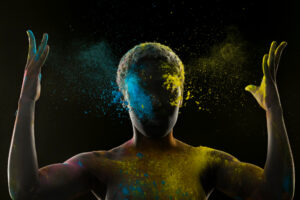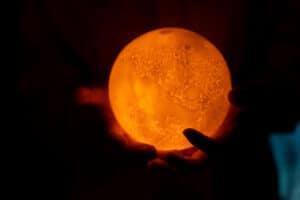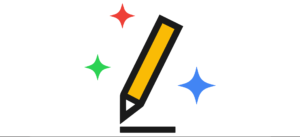
Table of Contents:
 In the dynamic realm of marketing, the strategic deployment of color transcends mere aesthetics; it wields the power of psychology. The interplay between color and human emotions is an exquisite art form that marketers have mastered to cultivate profound connections and catalyze consumer behavior. This blog is an odyssey into the kaleidoscopic universe of color psychology, unraveling the mechanisms through which diverse hues engender specific emotional responses and shape decision-making. As we navigate this chromatic journey, we will uncover how the fusion of psychological insights with marketing prowess illuminates the path to resonant and impactful communication.
In the dynamic realm of marketing, the strategic deployment of color transcends mere aesthetics; it wields the power of psychology. The interplay between color and human emotions is an exquisite art form that marketers have mastered to cultivate profound connections and catalyze consumer behavior. This blog is an odyssey into the kaleidoscopic universe of color psychology, unraveling the mechanisms through which diverse hues engender specific emotional responses and shape decision-making. As we navigate this chromatic journey, we will uncover how the fusion of psychological insights with marketing prowess illuminates the path to resonant and impactful communication.
Color psychology is a symphony of sensory experiences and emotional triggers intricately woven into the fabric of human perception. Rooted in evolutionary biology, colors once served as cues for survival, alerting our ancestors to potential threats or resources. Today, these primal responses are harnessed by marketers to orchestrate a symphony of emotions that harmonize with their brand narratives.
The human brain processes colors at remarkable speeds, often bypassing conscious thought and directly influencing emotions. Each color is a note in this symphony, capable of evoking joy, tranquility, excitement, or trust. The nuances of these emotional connections form the essence of color psychology.
Warm colors, reminiscent of a cozy hearth, ignite emotions with fervor and intensity. Red stands at the forefront, an embodiment of passion and urgency. It conjures a sense of excitement, igniting the desire to take action. Consider how the “Shop Now” buttons on e-commerce websites often sport a vibrant red hue, urging us to explore further and make a purchase.
Orange exudes an aura of enthusiasm and warmth. It radiates positivity and beckons consumers with a sense of friendly approachability. Brands seeking to convey a cheerful and energetic image often employ orange to infuse their communication with vibrancy.
Yellow, akin to a sunbeam, infuses environments with its radiant charm. It has a unique ability to uplift moods, invoke optimism, and stimulate mental activity. Businesses aiming to create an atmosphere of positivity, such as fitness centers or wellness brands, often embrace yellow as an emblem of well-being.
Cool colors, like a tranquil river, imbue a sense of calm and serenity. Blue reigns as a champion of trustworthiness and reliability. Financial institutions often gravitate towards blue, as it invokes a sense of security and stability, fostering confidence in their services.
Green, a verdant symbol of nature, embodies growth and harmony. It exudes a sense of balance and tranquility, often used by brands focusing on eco-friendliness or sustainable practices. Think of how organic food products utilize shades of green to evoke a sense of natural goodness.
Purple, an enchanting fusion of blue and red, exudes sophistication and creativity. Historically associated with royalty, it evokes a sense of luxury and exclusivity. Brands delving into artistic endeavors or seeking to add a touch of opulence often incorporate purple into their designs.
Neutral colors, akin to a canvas, offer versatility and elegance. Black embodies a duality of mystery and authority. Brands aiming to project a sense of luxury, elegance, or timelessness often utilize black to make a bold statement.
White, a pristine palette cleanser, signifies purity and simplicity. It instills a sense of clarity and cleanliness, often used by brands striving for a minimalistic and modern image. The dominance of white in Apple’s branding, for instance, epitomizes their commitment to sleek and innovative design.
Gray stands as an embodiment of balance and professionalism. It creates a neutral backdrop that allows other colors to shine, making it a valuable tool for establishing a harmonious visual hierarchy in design.
The symphony of color psychology extends beyond individual emotional responses and is harmoniously interwoven with cultural tapestries. Colors carry diverse symbolism across different societies, often rooted in historical, religious, or societal contexts.
For example, the color white may symbolize purity and new beginnings in Western cultures, making it a popular choice for weddings. In contrast, in some Asian cultures, white is associated with mourning and funerals. Similarly, the color red holds varied meanings; while it signifies luck and celebration in Chinese culture, it may symbolize danger or caution in Western societies.
In a globalized world, brands must tread carefully, considering the cultural implications of color choices to avoid misinterpretation or offense. The art lies in harnessing the universal elements of color psychology while respecting cultural diversity.
The canvas of a brand’s identity is painted with colors carefully chosen to evoke desired emotions and associations. Take, for instance, the iconic golden arches of McDonald’s, which utilize a vibrant combination of red and yellow. This strategic amalgamation elicits not only hunger but also a sense of urgency, coaxing customers to swiftly satisfy their cravings.
Color psychology finds its zenith in product packaging. The choice of colors can dramatically influence consumer perceptions. For health-conscious consumers, a package adorned with shades of green may signify natural ingredients and organic goodness, while a sleek black design may hint at luxury and sophistication.
In the digital landscape, colors guide user experiences. E-commerce websites employ strategically placed red or orange buttons to prompt purchases, while calming blues encourage longer browsing sessions. Facebook, with its iconic blue theme, creates an atmosphere of trust and comfort, inviting users to share their thoughts and memories.
Advertising campaigns are color symphonies designed to linger in the minds of viewers. Coca-Cola’s iconic use of red stirs emotions of happiness and refreshment, making its marketing campaigns a visual feast of joy. Meanwhile, tech giant Apple relies on a pristine white backdrop to communicate innovation, effortlessly inviting consumers into a world of sleek sophistication.
Coca-Cola‘s unapologetically red branding is a masterstroke in color psychology. Red symbolizes vitality and energy, a perfect fit for a beverage that promises refreshment and delight. Every glimpse of that vibrant hue invokes a burst of happiness, forever entwining the brand with feelings of joy.
When one thinks of modern technology, Apple immediately comes to mind. The company’s devotion to minimalism is beautifully portrayed through its signature use of white. Clean, elegant, and futuristic, this color choice underscores the brand’s commitment to innovation and design excellence.
McDonald’s is the epitome of fast food indulgence, and its color scheme ensures that you never forget it. The bold combination of yellow and red plays on our primal instincts, invoking hunger and excitement. These colors, woven into every aspect of the brand, create an unmistakable allure.
While the symphony of color psychology is harmonious, it’s essential to be mindful of potential dissonance. Cultural interpretations and personal associations can vary widely, leading to unintended perceptions. For example, a color that represents luck in one culture might be seen as banal or even negative in another.
In addition, an overreliance on color can overshadow other crucial aspects of branding or design. Relying solely on color to convey a message can lead to oversimplification and a lack of depth in communication. Striking the right balance between color psychology and other elements of design is key to a comprehensive and impactful approach.
Effective integration of color psychology requires a thoughtful approach:
Research Your Audience: Understand your target audience’s preferences, cultural backgrounds, and emotional triggers. Tailoring your color choices to resonate with your audience enhances the chances of creating a deep connection.
Consistency Is Key: Create a consistent color palette across all touchpoints of your brand, from logos and packaging to advertisements and websites. This consistency strengthens brand recognition and reinforces emotional associations.
Test and Iterate: Colors may evoke different responses depending on context. A/B testing can help fine-tune your color choices to elicit the desired emotional reactions.
Cultural Sensitivity: If your brand operates in multiple cultural contexts, be aware of color symbolism across those cultures to avoid misunderstandings.
As technology advances, the realm of color psychology is poised for exciting transformations. Artificial Intelligence (AI) is increasingly being employed to analyze color preferences and emotional responses on a granular level. AI algorithms can parse vast datasets to uncover previously unnoticed patterns, enabling marketers to refine their color strategies with unprecedented precision.
Furthermore, the integration of color psychology with virtual and augmented reality experiences is an emerging frontier. Brands can create immersive environments where color becomes an interactive tool, allowing consumers to navigate emotional landscapes in novel ways.
In the tapestry of marketing, colors are the threads that weave emotions, perceptions, and connections. The symphony of color psychology resonates deep within our consciousness, stirring feelings that guide our decisions. By embracing the art and science of color, marketers can elevate their communication from ordinary to extraordinary, crafting experiences that resonate long after the encounter. The psychological palette of colors is a boundless canvas upon which brands paint stories that endure in the hearts and minds of consumers.
To delve further into the captivating world of color psychology and its role in marketing, explore these insightful resources:








